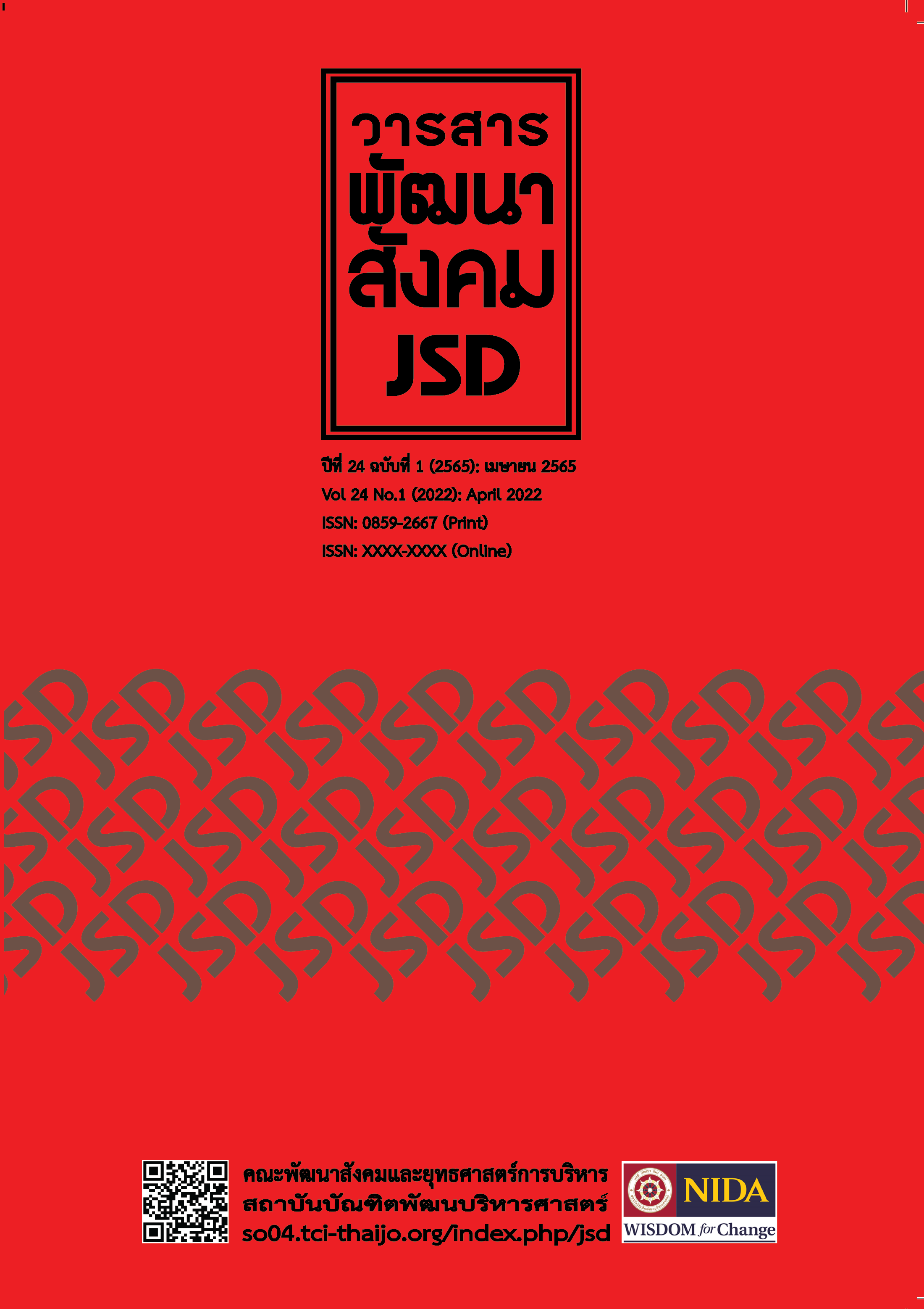The Fundamental understanding of Translational Research Scientist
Main Article Content
Abstract
This academic article aims to provide a fundamental meaning and characteristics of a translational research scientist (TRS). The roles and importance of TRS to the social developers, administrators and policymakers are also discussed. The TRS is defined as an academic staff or researcher who can convert theories and research results into practice. The characteristics of TRS include being a Boundary crosser, Domain expert, Team player, Process Innovator, Skilled communicator, Systems thinker, and Rigorous researcher. TRS is important in project or policy development process. As Evidence-Based Practice is an effective approach for social developers, administrators, and policymakers to develop a project or a policy for solving social problems, TRS is needed as a coordinator who link knowledges from research findings to implementation.
Article Details

This work is licensed under a Creative Commons Attribution-NonCommercial-NoDerivatives 4.0 International License.
References
Bhanthumnavin, D. & Bhanthumnavin, D. (2020). Translational Science [Class Handout]. SD8210 research and development of at-risk people. [in Thai] Retrieved October 8, 2020. National institution of Development Administration, Bangkok.
Butler, D. (2008). Crossing the valley of death: a chasm has opened up between biomedical researchers and the patients who need their discoveries. Declan Butler asks how the ground shifted and whether the US National Institutes of Health can bridge the gap. Nature, 453(7197), 840-843.
Collins, F. S. (2011). Reengineering translational science: the time is right. Science translational medicine, 3(90), 90cm17-90cm17.
Davidson, A. (2011). Translational Research What Does It Mean?. Anesthesiology: The Journal of the American Society of Anesthesiologists, 115(5), 909-911.
Flay, B. R., Biglan, A., Boruch, R. F., Castro, F. G., Gottfredson, D., Kellam, S., ... & Ji, P. (2005). Standards of evidence: Criteria for efficacy, effectiveness and dissemination. Prevention science, 6(3), 151-175.
Gilliland CT, White J, Gee B, Kreeftmeijer-Vegter R, Bietrix F, Ussi AE, Hajduch M, Kocis P, Chiba N, Hirasawa R, Suematsu M, Bryans J, Newman S, Hall MD, Austin CP. (2019). The Fundamental Characteristics of a Translational Scientist. ACS Pharmacol Transl Sci, 2(3), 213-216. doi: 10.1021/acsptsci.9b00022.
National Institutes of Health. (2007). Definitions under subsection 1 (research objectives), section I (funding opportunity description), part II (full text of announcement). of RFA-RM-07-007: Institutional Clinical and Translational Science Award (U54). http://grants. nih. gov/grants/guide/rfa-files/RFA-RM-07.
Nupairoj, N. (2020). Techsauce knowledge sharing platform. [in Thai] retrieved December 25, 2020 from https://today.line.me/th/v2/article/Jg3kDX
Phornphibul, P. (2019). Implementation Research: Competencies of Advanced Practice Nurses. Thai Journal of Nursing and Midwifery Practice, 6(2), 5-15.
Rubio, D. M., Schoenbaum, E. E., Lee, L. S., Schteingart, D. E., Marantz, P. R., Anderson, K. E., ... & Esposito, K. (2010). Defining translational research: implications for training. Academic medicine: journal of the Association of American Medical Colleges, 85(3), 470.
Wethington, E. E., & Dunifon, R. E. (2012). Research for the public good: Applying the methods of translational research to improve human health and well-being. American Psychological Association.


